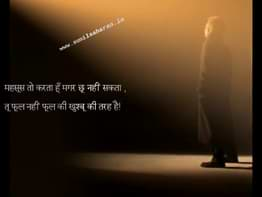Electricity: Basics
The article provides a comprehensive overview of basic electrical terminologies, simplifying complex concepts for easy understanding. Covering voltage, current, resistance, power, Ohm's Law, circuits, conductors, insulators, AC/DC, and series/parallel configurations, it demystifies electricity. The content empowers readers to comprehend essential electrical principles, emphasizing the simple terms
Explaining Basic Electrical Terminologies in Simple Terms
Electricity is a fundamental part of our modern lives, but the jargon used to describe it can be confusing. In this comprehensive article, we'll break down some of the most common electrical terminologies in a way that's easy to understand.
Voltage (V)
Voltage is like the push or pressure of electricity. Think of it as the force that pushes electric charge through a wire. It's measured in volts (V). Higher voltage means more push, like a high-pressure water hose, and lower voltage is like a gentle stream.
Current (I)
Current is the flow of electric charge in a circuit. It's like the amount of water flowing through a pipe. Current is measured in amperes (A), but we usually call it amps. More current means more charge flowing, while less current is like a trickle.
Resistance (R)
Resistance is the opposition to the flow of current. It's like a narrow part of a pipe that restricts water flow. Resistance is measured in ohms (Ω). High resistance makes it harder for current to flow, while low resistance allows for easier flow.
Power (P)
Power is the rate at which electrical energy is used. It's like how fast you're using water from a faucet. Power is measured in watts (W). More power means using energy faster, while less power means slower energy usage.
Ohm's Law
Ohm's Law is a simple equation that relates voltage, current, and resistance. It's like a recipe for understanding how these three things are connected. Ohm's Law states:
V = I × R
This means that voltage (V) equals current (I) multiplied by resistance (R). You can rearrange the equation to find current (I) or resistance (R) if you know the other two values.
Circuit
A circuit is like a path that electricity follows. It's a closed loop that allows current to flow. When you turn on a light switch, you're closing the circuit and allowing electricity to flow from the source to the light bulb.
Conductor and Insulator
Conductors are materials that allow electric current to flow easily, like copper wires. They're like open highways for electricity.
Insulators, on the other hand, are materials that don't allow electric current to flow easily, like rubber or plastic. They're like roadblocks for electricity.
AC and DC
AC (Alternating Current) is like a swinging pendulum. It changes direction regularly. It's the type of electricity that comes from your wall outlets.
DC (Direct Current) is like a river flowing in one direction. It's a constant, unchanging flow of current. Batteries provide DC power.
Series and Parallel
In a series circuit, components are connected end-to-end, like a string of holiday lights. If one bulb goes out, they all go out.
In a parallel circuit, components are connected side by side. If one goes out, the others stay lit. Most home electrical systems use parallel circuits.
Circuit Breaker and Fuse
A circuit breaker is like a switch that can be reset. It protects your circuits from overloading. If too much current flows, the breaker "trips" and turns off the circuit. You can reset it to restore power.
A fuse is like a one-time-use safety device. If too much current flows, it melts and breaks the circuit, protecting it from damage. Fuses need to be replaced after they "blow."
Understanding these basic electrical terminologies will help you grasp the essentials of electricity and how it works in everyday life. Electricity doesn't have to be mysterious; it's just a matter of knowing the basics!
Tags :Fundamentals of Electrical, Basics, Electricity, FoEE
The fool didn't know that it was impossible, so he did it.
Site Statistics
Stats at a Glance
Articles: 54
Viewed: 415743 Times
Photos : 53
Viewed: 583491 Times
Questions : 2344
Viewed: 387195 Times
Page Load No. 3401660
Photos
Take Quiz
1 Liners For Exam
Show Questions(1 by 1)




